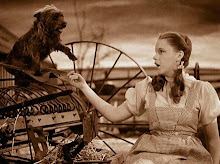
What is Selective Mutism?
Selective Mutism is an uncommon and complex childhood anxiety disorder characterized by a child’s inability to speak and communicate effectively in select social settings, such as school. These children speak and communicate in settings where they are comfortable, secure and relaxed.
Selective Mutism is an uncommon and complex childhood anxiety disorder characterized by a child’s inability to speak and communicate effectively in select social settings, such as school. These children speak and communicate in settings where they are comfortable, secure and relaxed.
The term Selective Mutism distinguishes individuals who demonstrate selectivity with whom they speak and are comfortable with, from individuals who speak to no one.
These children understand spoken language and have the ability to speak normally. In typical cases, they speak to their parents and a few selected others. Sometimes, they do not speak to certain individuals in the home. Most are unable to speak in school, and in other major social situations. Generally, most function normally in other ways, learning age-appropriate skills and academics.
These children may respond, or make their needs known, by nodding their heads, pointing, or by remaining expressionless or motionless until someone correctly guesses what they want. The majority of these children express a great desire to speak in all settings, but are simply unable to due to anxiety, fear, shyness and embarrassment.
What are characteristics of Selective Mutism?
Children with Selective Mutism often have tremendous difficulty initiating communication and often hesitate to respond, even nonverbally, in specific situations and places.
More than 90% of children with Selective Mutism also have social phobia or social anxiety.
These anxiety disorders are quite debilitating and painful to the child. Children and adolescents with Selective Mutism have an actual fear of speaking and of social interactions where there is an expectation to speak and communicate.
Children with Selective Mutism do not speak in specific situations, such as the school, although they do speak in other settings. Often in the settings where they choose not to speak, they communicate by gesturing, pulling, or pushing or, in some instances, by using restricted speech consisting of single words. A small percentage of children with Selective Mutism do not seem to be the least bit shy.
Children with Selective Mutism do not speak in specific situations, such as the school, although they do speak in other settings. Often in the settings where they choose not to speak, they communicate by gesturing, pulling, or pushing or, in some instances, by using restricted speech consisting of single words. A small percentage of children with Selective Mutism do not seem to be the least bit shy.
It is common for many children with Selective Mutism to have a blank facial expression and never seem to smile. Many have stiff or awkward body language when in a social setting and seem very uncomfortable or unhappy. Some will turn their heads, chew or twirl their hair, avoid eye contact, or withdraw into a corner or away from the group, seemingly more interested in playing alone.
It is important to realize that the majority of children with Selective Mutism are as normal and are as socially appropriate as any other child when in a comfortable environment. Parents will often comment how boisterous, social, funny, inquisitive, extremely verbal, and even bossy and stubborn these children are at home!
Learn More:
http://www.nasponline.org/educators/selectivemutism_ho.pdf
http://anxietynetwork.com/spsm.html
http://www.asha.org/public/speech/disorders/SelectiveMutism.htm
http://www.selectivemutism.org/smg/HelpingOurTeachers.htm
http://www.selectivemutismfoundation.org/about.shtml
http://selectivemutismcenter.org/NYTimes.html
http://www.washingtonpost.com/wp-dyn/content/article/2007/08/26/AR2007082601410.html?hpid=topnews
http://anxietynetwork.com/spsm.html
http://www.asha.org/public/speech/disorders/SelectiveMutism.htm
http://www.selectivemutism.org/smg/HelpingOurTeachers.htm
http://www.selectivemutismfoundation.org/about.shtml
http://selectivemutismcenter.org/NYTimes.html
http://www.washingtonpost.com/wp-dyn/content/article/2007/08/26/AR2007082601410.html?hpid=topnews

No comments:
Post a Comment